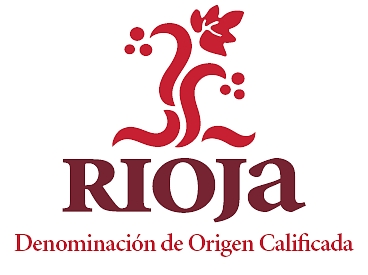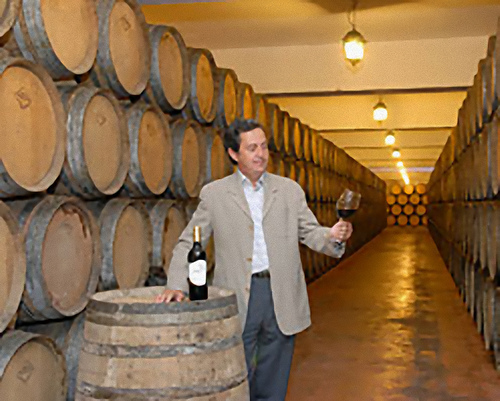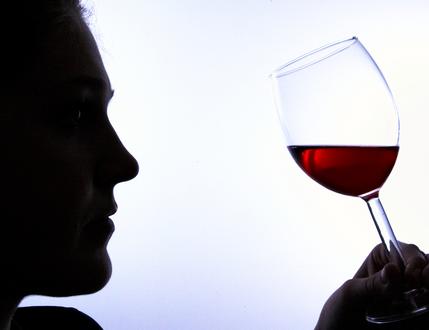Qualified Designation of origin Rioja
The History of Rioja Wines

Rioja is the most famous out of all the DOs in Spain, and one of the two DOCa in the country, the other being DOCa Priorat. Rioja wine has a very rich history which starts, as with most DOs in Spain, with the Romans.
As with many of Europe's wine making regions, the vineyards in La Rioja were founded by the Ancient Romans around Calahorra and Logroño, were cellars started to appear to supply the Roman troops. The Santiago Way brought pilgrims to the heart of La Rioja, as it still does today. Rioja wine was traded inside the borders of La Rioja, but travelers often sampled it and its fame spread through word of mouth. After the Reconquest, wine makers in La Rioja started to look for new markets like Bilbao and Santander, where English and Dutch merchants could buy them. The fame of Rioja wines extended in every direction, and during the mid 16th century, a prohibition was established that banned the producers from using grapes that hadn't grown inside La Rioja. To ensure the authenticity of the wines, they were transported in sealed wineskins.

At the end of the 18th century, Manuel Quintano (a Riojan wine maker) traveled to Bordeaux to learn the French wine making techniques and to teach Spanish wine making techniques to the French. When he came back he started introducing the oak barrel aging process in the Rioja wines. This greatly increased their longevity and suddenly a whole new market was available. However, the government imposed that all Rioja wines must have the same price, even if they had been aged in oak (which was expensive), so this economic disadvantage excluded oak barrels for almost a whole century. It was reintroduced by Murrieta, who also borrowed the use of large vats to crush and ferment the grapes from the French.
When the phylloxera destroyed the vineyards in France, the French couldn't have enough of the Rioja wines. Some wine makers went so far as to move to La Rioja and set up new wineries there (we're sure it had a lot to do with the great weather of the Spanish summers!). The experience and knowledge of these French wine makers resulted in an unprecedented growth of the Rioja wines. The phylloxera bug appeared in La Rioja around 1890, but by then the solution had been discovered so the damage wasn't as bad as it could have been if the plague had arrived earlier. Nevertheless, the authorities restricted the exports so the local wine supplies would take priority.
When the 20th century arrived, Rioja wines were known as the best kind of Spanish wines. However, the World War I, the Spanish Civil War and the World War II would result in a decrease in the production when most of the vineyards were torn up and used to plant cereals to try and mitigate the hunger throughout Spain. The vines returned in 1960, after all three wars were done, and the 1970 Rioja vintage was recognized by wine critics from around the world as "the vintage of the century", which of course increased sales as never before. In the 1980s there was a renewed interest in Spanish wines, and wine making regions like Ribera del Duero started getting more attention. In 1991, Rioja was awarded the DOCa status (Denominación de Origen Calificada) which recognized the premier wine region of Rioja.
Rioja in the Modern Days

The production area of Rioja wines can be divided into three sub zones
Upper Rioja
Upper Rioja is in the west of La Rioja, close to the shore of the Ebro river. Its the area with the highest elevation. The climate in this area is mostly continental. Upper Rioja is the biggest of all the Rioja wines production areas and produces almost 50% of all the production. As for the vines, around a 60% are Tempranillo, 12% Garnacha and another 4% is for other varieties of red grapes. The rest of the vines grow white grapes, mainly Viura. The wines produced in the Upper Rioja production zone are full bodied, with a medium alcohol content and high total acidity. They're suitable for aging in oak casks.
Lower Rioja
Lower Rioja is in the east of La Rioja, and it's the area with the lowest elevation. The climate is Mediterranean, quite dry and hot, perfect for the ripening of the grapes. Around 44% of the vines in this production area belong to the Garnacha variety, 38% to Tempranillo and 7% to the rest of red grape varieties. White grapes take up 11% of the plantation. Because of the higher insolation these grapes get, the alcohol content in them is higher.
Rioja Alavesa
DOCa Rioja Alavesa is a sub zone of DOCa Rioja that has it's vineyards in south of the Basque Country. The vineyards are planted right on the shore of the Ebro river, at 1150-1600 feet of altitude where they benefit from many hours of sun exposure. Around 80% of the plantation is composed of Tempranillo grape, with another 4% dedicated to red grapes and the rest to several varieties of white grape. Rioja wines produced in the Rioja Alavesa production area are generally reds with average alcohol content. They're normally sold as young wines, but they're also good for aging in oak casks.
La Rioja is also quite famous for its wine tours. You can take a tasting course in Spanish, which will teach you to appreciate Spanish wines and help you with your Spanish vocabulary!
Spanish Wine History
Spanish Wine Regions and DO
Spanish Wine Tours
Top Spanish designations of origin
Best Spanish Wines
Spanish Wine Production
Spanish Wine Types
Spanish Grapes
Spanish Sparkling Wine: Cava
Sherry Wine
Spanish Wine Cocktails
Spanish Wines in the World
Spanish Wine Prizes
Enotourism
Spanish spirits and liquors
Argentina Wines
Chilean Wines
Other sites